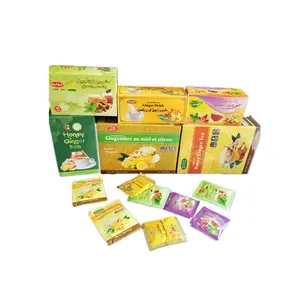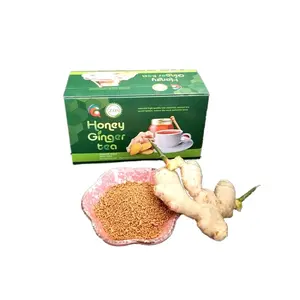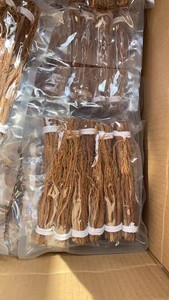
All categories
Featured selections
Trade Assurance
Buyer Central
Help Center
Get the app
Become a supplier

(895 products available)







































Radix ginseng albae, known in core areas as white ginseng, is largely categorized in types depending on the processing and the duration of the root’s storage.
Fresh ginseng
Fresh ginseng is freshly harvested and unprocessed. Its roots store nutrients and have potential health benefits. Often, fresh ginseng has a short shelf life, so it requires careful storage to maintain freshness and potency.
Dried ginseng
Fresh ginseng is dried to extend its shelf life and make it easier to use. The drying process concentrates the ginseng, which is often more potent than fresh ginseng. The dried ginseng is used to make teas, extracts, and supplements.
White ginseng
White ginseng is produced from fresh ginseng, which is peeled and then dried using methods like slow sun drying or heat treatment. Dried white ginseng is less potent than red ginseng but is gentler and more tolerable, especially to new users.
Red ginseng
Red ginseng is derived from fresh ginseng that is steamed and then dried. The steaming process changes the chemical composition of the root, increasing certain ginsenosides. This process is thought to make red ginseng stronger, thus explaining its frequent use in more serious therapeutic contexts.
Coated ginseng
Coated ginseng is derived from white or red ginseng roots that are processed with honey or other substances. This helps to modify the impact and potential side effects of ginseng. For instance, honey-coated ginseng may help with its sweetness to avoid bitterness in medicine.
Fermented ginseng
Fermented ginseng involves treating ginseng with probiotics or other fermentation agents. This could help increase the bioavailability of some substances in ginseng, thus improving their absorbability for optimal usage by the body.
The following should be considered when buying ginsenosides from wholesalers on ginseng extracts:
Potency
Ginsenosides are the active compounds in ginseng, and different ginseng varieties may have different ginsenoside concentrations. Buyers should ensure the product contains the necessary ginsenoside levels for the intended use.
Purity
Since ginseng is a sought product in many countries, it is often susceptible to fraud. Ginseng may sometimes be adulterated with other plants to increase profits. At this point, ensure that what was sent was genuine ginseng and not something else. Additionally, consider ginseng extract ginsenoside ratios like red ginseng powder to water to ensure purity and potency are maintained and not diluted or compromised.
Quality and source
What kind of ginseng root is being harvested? Is it the Korean variety or American? How old is the ginseng root? Roots that are six years and older are more potent than younger ones. What conditions are they harvested in? Make sure to analyze the quality of the root and the reputation of the manufacturer. Are they certified? Look at independent testing results and certifications to ensure quality and safety standards.
Extraction methods
The extraction process can influence the ginsenoside content and the ginseng's overall effectiveness. Preferred methods include alcohol extraction and water extraction to avoid losing essential compounds. Avoid products using chemical solvents for extraction, as they can leave harmful residues.
Product forms
Ginseng products come quite in variety. They include whole roots, powders, capsules, tinctures, and teas. Each form may offer different potency levels and rates of absorbability. One might prefer tinctures or extracts for faster absorbability. In contrast, powdered or whole ginseng might act slower but could be more potent.
Market demand and trends
Somewhat similar to other products, the popularity of certain ginseng types can largely influence their availability and price. Take, for instance, Korean red ginseng is often more expensive due to its high demand and perceived potency. One should also consider emerging trends in ginseng supplementation, like standardized extracts that may contain higher ginsenoside levels to ensure products meet consumer health expectations.
Radix ginseng albae is derived by drying out fresh ginseng rhizome and is often used together with other herbs in traditional health teachings to improve synergy and effectiveness. It’s mostly combined with Astragalus (Huang qi) to boost energy and immunity or licorice root (Gan cao) for balance and easy absorbability. It can also be used on its own in simple decoctions.
Traditional decoction
Prepare a ginseng tea by boiling an ounce of sliced ginseng root in water for an hour. Drink several times daily for a steady amount of ginsenosides.
Extracts and tinctures
These are concentrated forms of ginseng that should be taken in smaller dosages. Follow the manufacturer’s guidelines for abstract ratio ginseng to alcohol usages and take them as recommended, usually diluted in water or another liquid for proper absorbability.
Capsules and tablets
Cap ginseng concentration, which is the extract ratio of ginseng to water, is often 5:1 or higher to avoid lower lethargies. Take as directed. Normal dosages are usually around 100 to 500 milligrams per day, although this may depend on the ginseng variety and reason for use.
Powdered ginseng
Powdered ginseng is highly concentrated, meaning ginseng-water extraction ratios are more likely higher than 20:1. Mix ginseng powder with food or drinks for easier intake and seek medical advice for correct dosages.
Topical ginseng
Some ginseng products like ointments and creams are added to the skin for local benefits – like improving blood circulation. Apply a small amount to the affected area and massage gently.
Radix ginseng albae is known to have multiple health benefits that may help in different health aspects. These include:
Improves energy
Ginseng can be used as a natural stimulant to improve energy, especially in tiredness and fatigue. It’s often used by people to gain a boost during the day without the jitters associated with caffeine.
Improves cognitive function
Ginseng increases blood flow to the brain, which may enhance mental performance, focus, concentration, and memory. This makes ginseng a popular supplement among students and professionals who want to sharpen their wits.
Supports immune system
Some compounds in ginseng, such as ginsenosides, may help modulate the immune system. For instance, during the flu season or in times of illness, Korean red ginseng can help boost the body’s defense mechanisms to prevent infections.
Reduces stress
Ginseng is classified as an adaptogen, meaning it helps the body adapt to stress. It may help lower levels of cortisol, the hormone released in response to stress, thus promoting a sense of calm and well-being.
Antioxidant properties
Ginsenosides and other antioxidants in ginseng protect cells from oxidative stress caused by free radicals. This may lower the risk of chronic diseases and supports overall health and longevity.
Regulates blood sugar
Some extracts of ginseng may help lower blood sugar levels and improve insulin sensitivity, which is important for people with type 2 diabetes or those at risk of developing diabetes.
Improves sexual function
Panax ginseng has been traditionally used to support libido and erectile function in men and enhance sexual arousal and satisfaction in women.
Ginseng can be taken on a daily basis, as it is often classified as a supplement. However, moderation is key because ginseng tends to build up in the system over time. It is generally appropriate to cycle its use: take it for a few weeks and then stop for a week or so to avoid developing a tolerance.
Ginseng generally takes about a week to start working. Other users may feel the effects sooner depending on their individual responses and the type of ginseng used.
Ginseng can be taken on an empty stomach because it’s usually taken in the form of medications like extracts and capsules, which may not interact with food. However, some people find it easier to tolerate when taken with food, especially those prone to digestive issues.
Korean ginseng and white ginseng have their own unique benefits. Korean ginseng is often considered more potent due to its higher ginsenoside content, especially in red ginseng, which undergoes a steaming process that enhances its properties. At the same time, white ginseng is milder and more balanced, making it more suitable for those new to ginseng or those looking for a gentler effect.
The normal allowable dosage varies based on the ginseng type and user sensitivity. For ginseng root, the typical dose is 1 to 2 grams per day. For red ginseng extract, the standard dosage ranges from 100 to 400 milligrams per day.